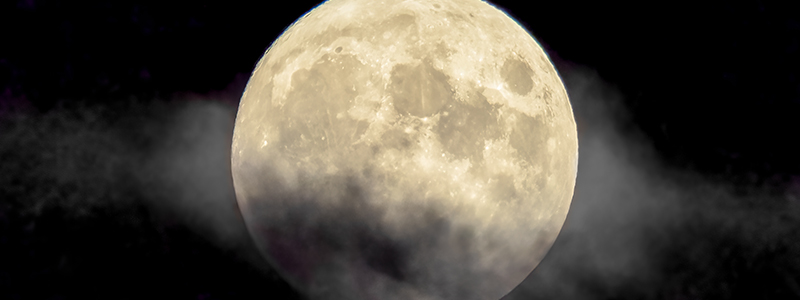Products You May Like
With each passing year, the effects of rising global temperatures become even more obvious, while the chances of avoiding greater catastrophes in the future retreat like every melting glacier.
Desperate to avoid worst-case scenarios, researchers have proposed various measures that could, at the very least, buy us the time we might need to mature as a society and work to undo the damage.
Blasting a steady stream of dust from the surface of the Moon is the latest suggestion to get a solid scientific appraisal, with University of Utah computational astrophysicist Ben Bromley and computer scientist Sameer Khan and Smithsonian Astrophysical Observatory astrophysicist Scott Kenyon giving the idea a tentative thumbs up.
This isn’t to say it falls into the ‘good idea’ category. Not yet, at least. But as far as extreme measures go, it’s a plan that could come with far fewer risks and potentially lower costs than many other strategies being entertained for emergency options.
Thanks to historic levels of carbon dioxide lingering in our atmosphere, every joule of solar radiation that warms the planet has a slightly lower chance of returning to space.
The logical thing to do would be to work together to kick our nasty habit of smoking fossil fuels. Shocking as it seems, it could be faster and easier to engage in mammoth-scaled engineering projects that literally reflect a proportion of sunlight before it hits Earth and is converted into a form that’s likely to stick around as heat.
Early suggestions of adding a thin haze made of sulfur dioxide particles to our atmosphere seem practical and economically feasible. However, the environmental consequences might just swap one crisis for another.
Scattering a swarm of tiny parasols or blowing a curtain of fancy bubbles into space could do the trick, with the advantage of being disassembled faster than the IPCC can say, “Golly, that sure was a mistake!”
On the other hand, the sheer amount of energy and effort required to launch and steer a sizable flotilla out to a convenient dead zone between the Sun’s gravity and our planet is unprecedented, increasing the risk of failure.
Bromley, Khan, and Kenyon have done the math on the characteristics of a 10-billion-kilogram dust cloud doing much the same job.
The idea itself has been kicked around as a less intrusive version of sulfur being suspended in Earth’s atmosphere. It has benefits over more technical space-borne projects, relying on material that doesn’t require significant manufacture, doesn’t need to be launched from our surface, and doesn’t pollute our planet.
Assessing the shadow cast by different kinds of material, the impact of gravitational forces, radiation pressure from sunlight, and the smack of the solar wind, the researchers calculated the qualities and quantities of small rocky fragments required to filter out just under 2 percent of the Sun’s rays.
They showed the dust cloud would clear relatively quickly, depending on their size. Micron-sized grains would be pushed out of position within a week, requiring fairly regular top-ups. On the plus side, there’d be no need for adjustments to orbits should things go wrong. Just wait a few days for the fog to lift, and it’s business as usual.
According to the researcher’s calculations, some orbits could allow dust grains to be mined and shot from the Moon to provide the necessary shade for days on end.
Initial suggestions for a cosmic dust screen temporarily cooling our planet involved the use of asteroids, but why go hunting for distant sources of space dirt when there’s a great big ball of it right in our backyard?
Squirting a carefully calculated stream of Moondust from a future lunar station at the right point between the Sun and Earth might be the most cost-effective, risk-free means of keeping our cool until we come to our senses and cut emissions.
Whether such projects ever need to be put on the table and considered seriously will depend on what we learn in the coming decades.
By the end of the century, rising sea levels, heat waves, collapsing ocean currents, and extreme weather events could well make us beg for an artificial volcano of Moondust to save our skins.
This research was published in PLOS Climate.
